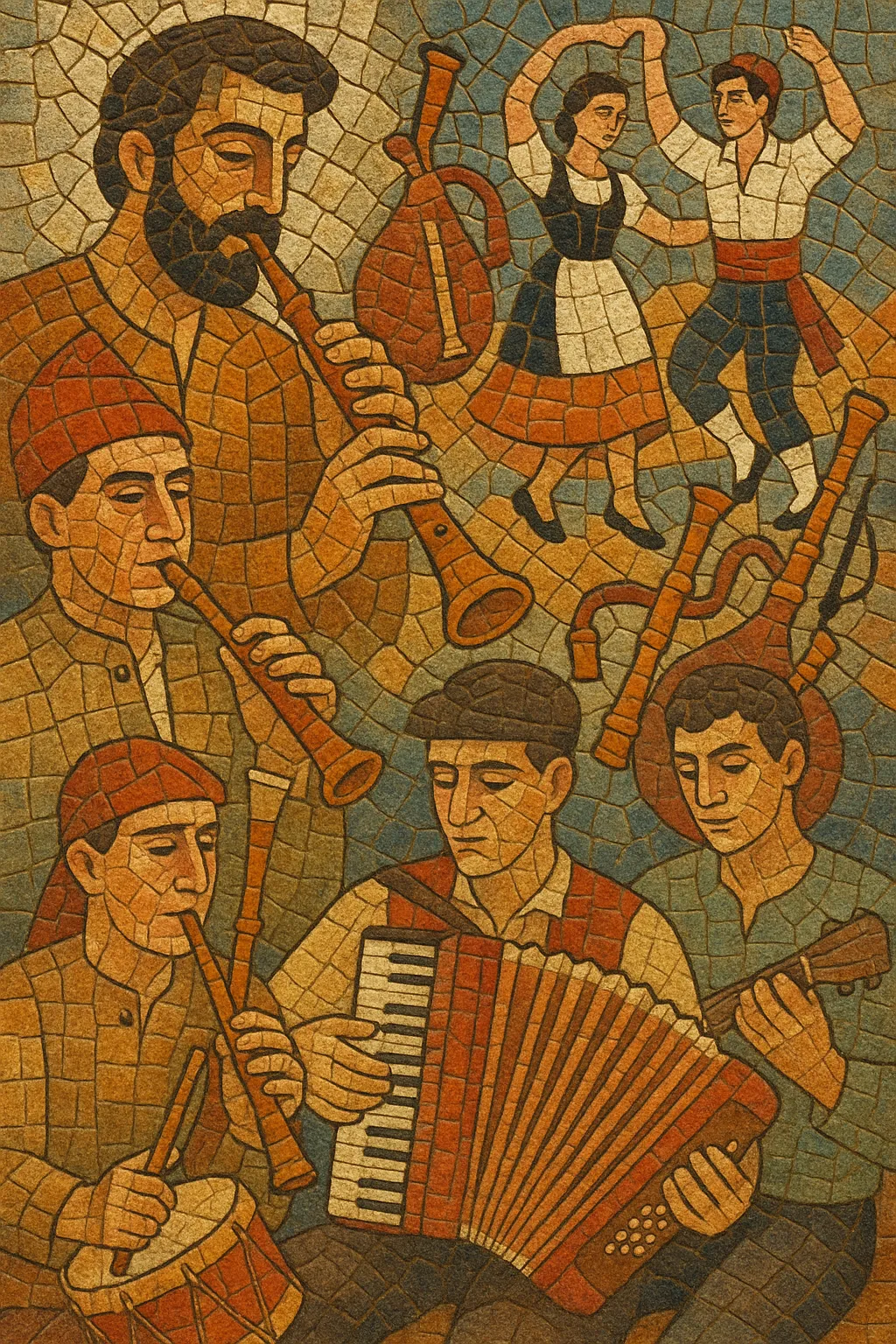Catalan folk music encompasses the traditional songs, dances, and instrumental practices of Catalonia and the wider Catalan-speaking world. It is best known for the sardana circle dance accompanied by the distinctive cobla wind ensemble, as well as seafaring havaneres sung along the coast.
The idiom blends medieval and rural song traditions with 19th‑century codification and urban revival. It features modal, diatonic melodies; lively dance rhythms; and a strong social dimension in communal dancing, festivals, and choral singing. Characteristic instruments include the tenora and tible (Catalan shawms), flabiol i tamborí (pipe and tabor), gralla, sac de gemecs (bagpipe), accordion, guitar, and the full cobla instrumentation with brass and double bass.
Across regions and repertoires—from sardanes and jotes ebrencs to work songs, goigs, caramelles, and tavern-style havaneres—Catalan folk music remains a living, participatory tradition closely tied to local identity and public celebration.
Catalan folk music has roots in medieval and early modern song and dance across rural Catalonia, with repertories such as ball de bastons, work songs (cants de batre), religious goigs, and seasonal caramelles. Communal singing and dancing sustained local identity, while itinerant musicians preserved instrumental repertories on gralla, bagpipes, and strings.
During the 19th century cultural revival (Renaixença), the sardana became the emblematic dance. Josep Maria “Pep” Ventura helped standardize the modern sardana and the cobla ensemble, adding instruments like the tenora and establishing a balanced wind-and-bass texture. Composers such as Enric Morera and Juli Garreta expanded sardana composition, elevating it from village dance to concert repertoire.
From the late 19th century, sailors returning from the Caribbean brought the habanera, which localized into havaneres—choral seaside songs with the characteristic habanera rhythm. Summer gatherings (cantades d’havaneres) in towns like Calella de Palafrugell popularized this repertoire throughout the 20th century.
Under the Franco regime (1939–1975), Catalan language and cultural expressions faced constraints, though sardanes and folk practices persisted in varying forms. From the 1960s, the Nova Cançó movement drew on folk idioms for song-based cultural expression. After Spain’s transition to democracy, a robust folk revival reinforced aplecs (sardana meetings), casteller festivals (with gralla bands), and havanera sing-alongs, while new groups blended tradition with contemporary styles.
Today, cobles such as La Principal de la Bisbal and Cobla Sant Jordi perform both traditional and newly composed sardanes. Folk ensembles and singer‑songwriters revisit traditional repertoires, and festivals, dance associations, and music schools ensure transmission. The scene remains dynamic, integrating historical practice with creative reinterpretation.


